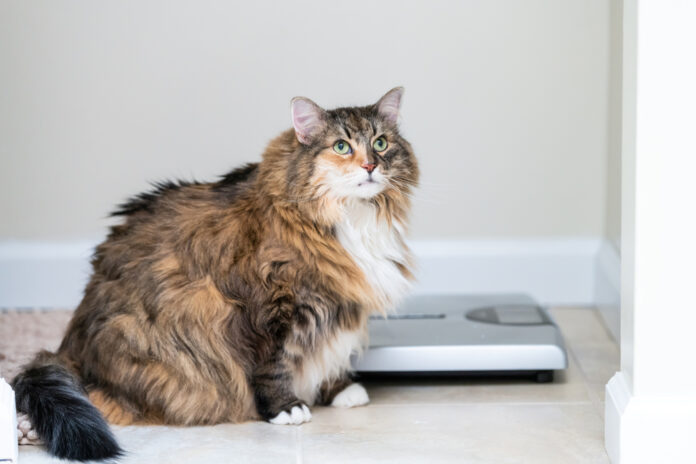How herbs can improve your animal’s joint health

Herbs go deeper than NSAIDs when it comes to alleviating the inflammation at the root of arthritis and other joint problems – and without the side effects.
Aches, pains, arthritis and reduced range of motion are common in older dogs and cats. After many trips to the veterinarian, often resulting in various pain medications, these animals continue to suffer. An integrative approach that includes herbs can go a long way to providing relief to a dog or cat with joint problems.
Joint deterioration in varying degrees is an inevitable fact of life for our animal companions, depending on the breed and many other factors. In reality, joint pain is a signal not only of a problem, but a prime indicator of inflammation. The process of inflammation is one that impacts all our bodies, human and animal, and it’s deeply connected with many health conditions, not just joints. Inflammation is a complex process, beyond the scope of this article, but there are some basics that are crucial for us to understand.
What exactly is inflammation?
Inflammation is not just about pain, redness, heat or swelling. It goes much deeper and is often undetectable before clinical problems develop. It is an ongoing cellular process, contributing not only to joint pain; it’s also one of the main reasons we age and our hair turns gray. Inflammation is about cellular signaling or cross talk between cells, the production of inflammatory proteins that not only signal pain but are also directly involved with cellular degeneration and improper function on many levels. It’s not just limited to the cartilage within a joint.
Inflammation and arthritis
In the case of joint pain or arthritis in pets, the process starts at a very basic level with increased inflammation at a cellular level. Joints are among the main areas impacted because they are being used every day and suffer an increased rate of wear and tear. This process is further fueled by improper diets including processed foods, overall poor nutrition, genetic factors, stress, body weight and even conformation. All these factors contribute on some level and help to advance or stir that fire of inflammation.
Often, the first stage is inflammation of the soft tissue structures and the capsule surrounding the joint. As the inflammatory process continues and advances, it moves deeper with the destruction of cartilage, and finally, bone remodeling, including spur development and joint collapse. This process is not only painful, but limits the animal’s range of motion and ability to move, and eventually impacts his overall quality of life.
Herbs go deeper than NSAIDs
Science and research have shown us over the past few decades just how powerful and effective some herbs can be in alleviating inflammation in the body, as opposed to NSAIDs. Many herbs demonstrate the ability to impact the inflammatory process. They include curcumin, boswellia, ashwaghanda, devil’s claw and dandelion.
Each herb has its own individual benefits (see sidebar), but when it comes to inflammation, they all work in a similar fashion, impacting the inflammatory response at the level of DNA. They reduce the production of many inflammatory proteins by acting as what is termed NF-κß, a transcription factor. Instead of just impacting one or two inflammatory proteins, as in the case of NSAIDs, many herbs can actually impact the production of ten, 20 or more proteins, thus providing a higher level of support.
Considering the scope of inflammation and its connection with many other health conditions, herbs provide an interesting approach. Through the use of herbs, not only can we improve the comfort and quality of life of a dog or cat, but we can also potentially impact the degenerative process itself, slowing deterioration and even aging, to a degree.
Research has demonstrated this ability with herbs such as curcumin, boswellia and devil’s claw; they have potential in slowing joint deterioration and even positively affecting mental capabilities. The impact on other conditions involving the process of inflammation, including cancer and diabetes, is also very promising. The other thing we must not forget is that herbs not only have a strong medicinal impact, but are also foods, providing many nutrients and even antioxidant capabilities. A further plus for health and well-being!
The body is a fine-tuned machine. What we put into it is what we get out of it. When we understand the hows and whys of our pets’ (and our own) health problems, it becomes more evident that the machine needs proper tending to keep it functioning at the highest level. Pharmaceutical medications have their place, no doubt, but in reality, it boils back to proper fuel in the form of nutrition, including herbs, which provides the basics for overall cellular health and function.
Going one step further and understanding that the process of inflammation is ongoing, likely since our animals were puppies and kittens, we can help prevent problems with the use of proper diet and herbs. In theory, if we can control the inflammation process more effectively, right out of the gates, then we stand a better chance of minimizing damage over the long term.
Through the proper use of herbs, often in combinations, we can improve the quality of life for our dogs and cats, helping to ease their aches and pains, and assisting them to age gracefully.




